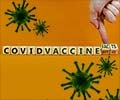A novel network-based approach helps identify which virus to prioritize for more human surveillance to avoid the risk of spillover.
- In the last ten years, hundreds of novel viruses that potentially affect both people and wildlife have been discovered
- Coronaviruses are more likely to spread and so surveillance of coronaviruses should be prioritized
This discovery is published in the journal Communications Biology.
Prioritizing New Viruses
The machine learning models concluded that more species might serve as hosts for new coronaviruses. This finding indicates that surveillance of coronaviruses should be prioritized.To quantify the risk of zoonotic transmission, the researchers assigned each virus a priority score.
“As surveillance expands, we hope to be inundated with data associated with viruses. These tools will help us understand the risk from novel viruses, which can help prepare for future pandemics,” said lead author and veterinary epidemiologist Pranav Pandit, a researcher with the UC Davis One Health Institute.
Connections Between Environmental Change and Viruses
The model calculates the probability that humans will serve as hosts for more than 500 newly identified viruses between 2009 and 2019. It does this by using a data-driven virus-host network.Insight into the ecology of viruses and hosts has been provided via host-pathogen networks. This information is crucial for determining the risk that viruses bring to human health. It is particularly critical considering the environmental and climatic changes. The danger of viral transmission between species can rise as the landscape changes and species adapt and relocate in response.
The machine learning model compared numerous paramyxoviruses with coronaviruses. It was a top priority for future research. Measles, mumps and respiratory tract infections are among the illnesses brought on by this viral family.
“Characterizing hundreds of viruses takes a lot of time and requires prioritization. Our network-based approach helps identify the early signals in the ecological and evolutionary trajectories of these viruses. It can also help illuminate missing links between viruses and their hosts,” said Pandit.
Source-Eurekalert












